Pinturas murales en las Cuevas de Altamira
13.000 – 10.000 a.C. – Pinturas rupestres – Altamira, Cantabria (España)
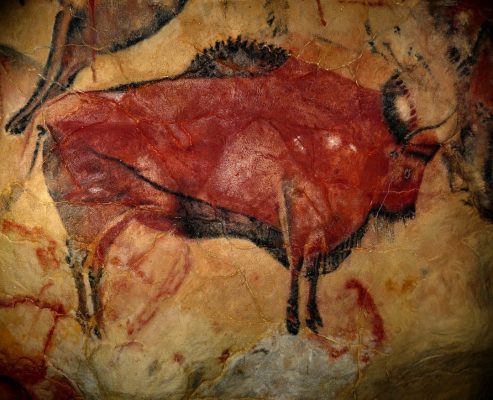
Cave of Altamira – Bison – 13000-1000ac – Altamira – Spain
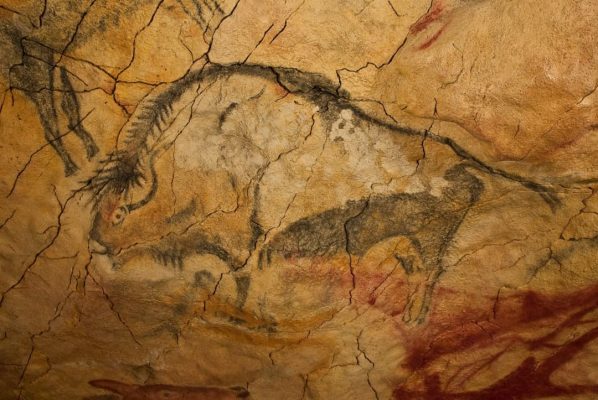
Cave of Altamira – Bison 2 – 13000-1000ac – Altamira – Spain
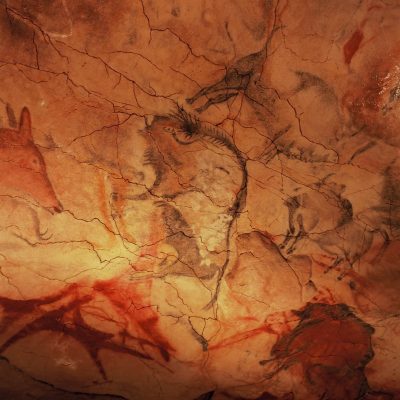
Cave of Altamira – Paleolithic – 13000-1000ac – Altamira – Spain
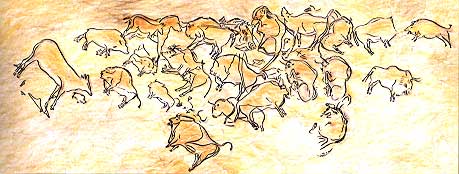
Cave of Altamira – Reconstruction – 13000-1000ac – Altamira – Spain
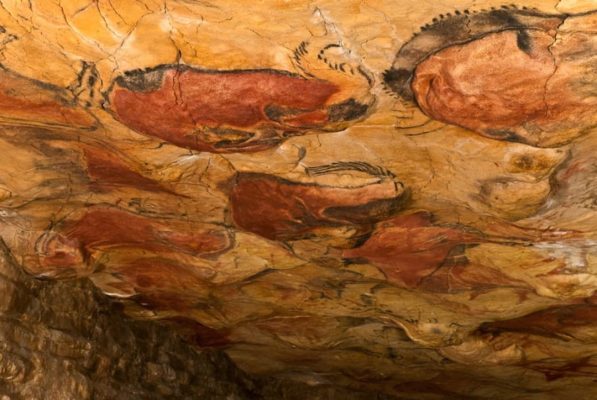
Cave of Altamira – Top view – 13000-1000ac – Altamira – Spain
A las pinturas murales de la cueva de Altamira se les ha llamado, de una manera un tanto entusiasta, “la Capilla Sixtina del Paleolítico”. Las pinturas, de rasgos extraordinariamente realistas, están realizadas mediante un contorno de manganeso negro y un relleno ocre y rojo, de tal manera que las figuras poseen ya una notable cualidad volumétrica.
Sean estas pinturas un primitivo “manual de caza” para enseñar a otros miembros de la tribu donde y como cazar las presas, sean una especie de conjuro mágico para atraer a los animales, está claro que el Arte paleolítico está indisolublemente ligado a la caza. Y en cuanto ésta deja de ser el recurso principal, el hombre abandona las cuevas, y estos primitivos dibujos permanecen ignorados por la humanidad hasta que, muchos miles de años después, una pequeña niña llamada María de Sautuola descubre maravillada la primera gran obra maestra de la historia del Arte. Arte de supervivencia, Arte sin intención de serlo, sin duda, pero Arte, al fin y al cabo.
Texto: G. Fernández, theartwolf.com
Altamira Cave Paintings
13,000 – 10,000 b.C. – Cave painting – Altamira, Cantabria (Spain)

Cave of Altamira – Bison – 13000-1000ac – Altamira – Spain

Cave of Altamira – Bison 2 – 13000-1000ac – Altamira – Spain

Cave of Altamira – Paleolithic – 13000-1000ac – Altamira – Spain

Cave of Altamira – Reconstruction – 13000-1000ac – Altamira – Spain

Cave of Altamira – Top view – 13000-1000ac – Altamira – Spain
The sensational mural paintings found in Altamira have been called -in a somewhat enthusiastic way- “the Sistine Chapel from the Palaeolithic”. The extraordinary realistic figures are painted with a black manganese contour and an ochre and red filling, in such way that the figures have a remarkable volumetric quality.
Perhaps these paintings are a primitive “hunting guide” to teach other members of the tribe how to hunt the animals, and where to find them; or perhaps they are a kind of magical spell to attract the animals. Anyways, it is evident that Palaeolithic Art is indissolubly linked to hunting. And as soon as such activity was no longer the most important, humans left the caves, and these primitive drawings remained ignored until 1879, when a young girl named Maria de Sautuola discovered one of the world’s earliest art masterpieces. Art without any intention of being Art, perhaps, but Art, after all.
Text by G. Fernández, theartwolf.com





